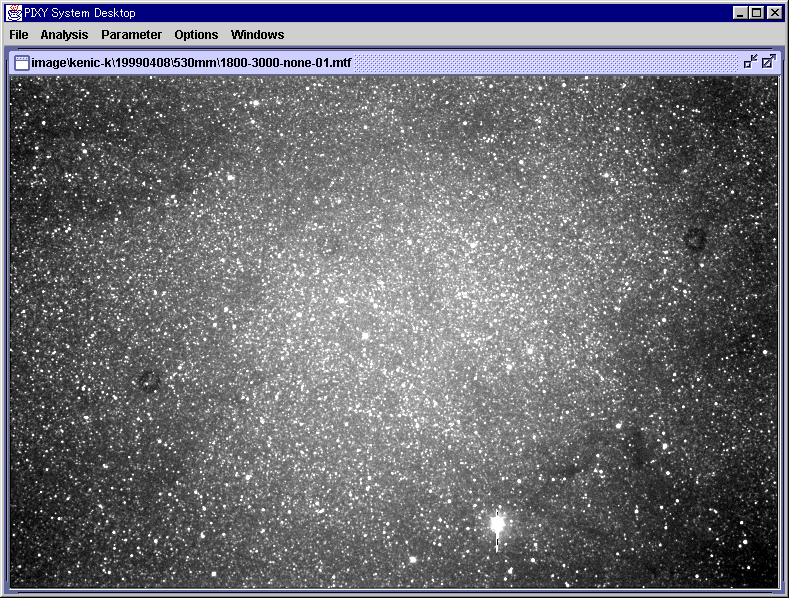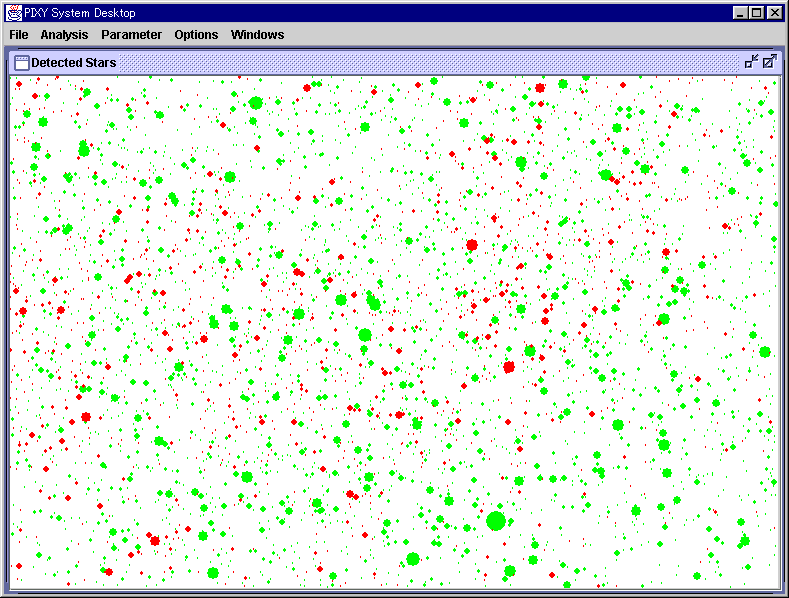Japanese version Home Page Updated on September 30, 2002
USNO-A2.0 data around R.A. 18 hour, Decl. -30 degThe pattern of stars between an image and a star chart becomes very different in the midst of the Milky Way in Sagittarius. Here introduces the example of an image at R.A. 18 hour, Decl. -30 deg. The pattern of stars does not correspond between a real image and a star chart using the USNO-A2.0 in this region. Here is the unfiltered CCD image of this region taken by KenIchi Kadota. 
Examining this image using the PIXY System 2, it shows a chart of detected stars, and another chart of the same area plotting the USNO-A2.0 data. Here is the result. A green star is a normal one, detected from the image, and also recorded in the USNO-A2.0. A red star on the "Detected Stars" chart is one detected from the image, but not recorded in the USNO-A2.0. A red star on the "USNO-A2.0" chart is one recorded in the USNO-A2.0, but not detected from the image. On the "USNO-A2.0" chart, we can find no condensation or missing of stars. However, many bright stars are plotted in red color both on the "Detected Stars" and "USNO-A2.0" charts. That means the pattern of stars does not correspond between the image and the chart. In this case, it looks no problem at first glance when drawing a star chart using the USNO-A2.0. However, it is very hard to find the same star between the image and the chart. Mis-identifications can happen easily in such a region. The number of stars in this region is as follows.
The astrometric error of the examination using the PIXY System 2 is 1.7 arcsec. 

NOTE: The stars on the USNO-A2.0 chart are plotted based on the magnitude converted by the Taichi Kato's formula: V = R + 0.375 * (B - R) |
